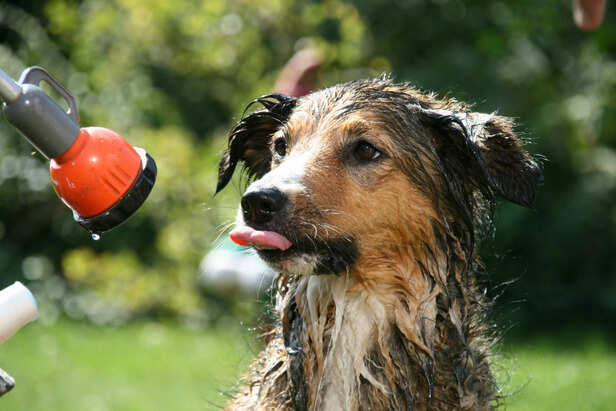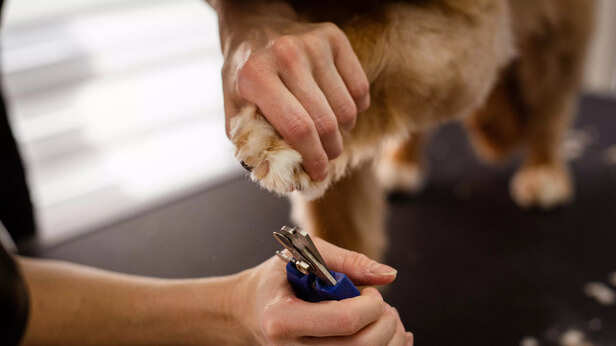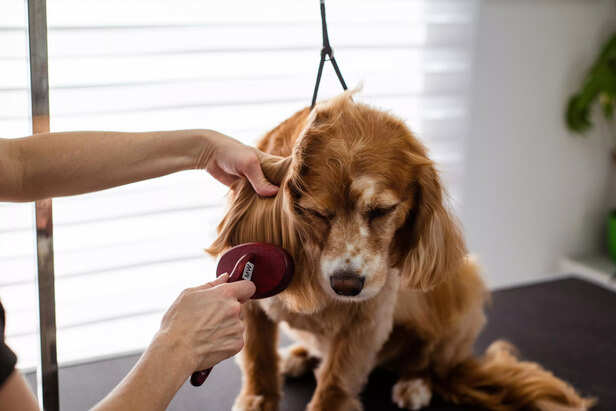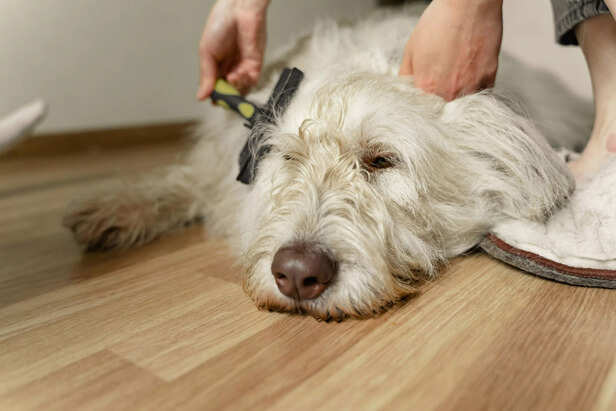Winter Grooming Tips Every Pet Owner Needs to Know
Nikita Kanyal | Dec 16, 2024, 23:50 IST
Winter Grooming Tips Every Pet Owner Needs to Know ( Image Source : Pixabay)
Winter presents distinct challenges for pet grooming, yet with proper care, you can ensure your furry companion remains comfortable and healthy. By safeguarding their paws with balms and booties and keeping a clean, insulated coat, these crucial winter grooming tips address it all. Discover how to tackle dry skin, trim nails securely, avert hypothermia, and adjust grooming habits for the colder season. With regular care, your pet will flourish during winter’s chill and enjoy warmth indoors.
Winter is a magical time filled with cozy blankets, warm drinks, and the beauty of snow-covered landscapes. But as temperatures drop, it’s not just humans who need extra care; our furry friends do too. Winter brings its own set of grooming challenges and requirements for pets, and proper grooming can make a world of difference in keeping them comfortable, healthy, and happy. Here are some essential winter grooming tips every pet owner should know.
1. Keep Their Coat Healthy and Clean

A pet’s coat is their natural insulation against the cold, but it needs proper maintenance to stay effective. Regular grooming helps remove dirt, debris, and loose fur, preventing matting and ensuring your pet stays warm.
Brushing: Brush your pet’s coat frequently to keep it free of tangles. For long-haired breeds, use a slicker brush to prevent mats. Short-haired pets can benefit from a rubber brush to remove loose fur and stimulate their skin.
Bathing: Limit baths during winter, as frequent washing can strip their coat of natural oils, leading to dryness. When you do bathe your pet, use lukewarm water and a moisturizing pet shampoo. Make sure they’re thoroughly dry before going outside to prevent them from catching a chill.
2. Don’t Skip Nail Trims

During winter, pets may spend less time on rough surfaces like pavement, which naturally wear down their nails. Overgrown nails can lead to discomfort and difficulty walking, especially on slippery winter surfaces.
Regular Trimming: Check and trim your pet’s nails every couple of weeks. If you hear clicking sounds when they walk, it’s time for a trim.
Paw Pads: Pay close attention to the fur between their paw pads. Trimming this fur helps prevent ice, salt, and debris from getting stuck, which can cause irritation or injury.
3. Protect Those Paws

Winter can be harsh on your pet’s paws. Ice, snow, and road salt can lead to cracked, dry, or irritated paw pads, making it crucial to take protective measures.
Paw Balm: Apply a pet-safe balm to your pet’s paws before and after walks to protect and moisturize them. It acts as a barrier against harsh conditions.
Booties: If your pet tolerates them, invest in winter booties. They provide excellent protection from salt, ice, and freezing surfaces.
Post-Walk Care: After each walk, wipe your pet’s paws with a damp cloth to remove salt and debris. Check for signs of irritation or cuts, and address them promptly.
4. Adjust Grooming for the Season

Your pet’s grooming needs may vary based on their breed and coat type. While it’s tempting to give your pet a short haircut for convenience, this might not be the best choice during winter.
Trim, Don’t Shave: Avoid shaving your pet’s coat too short in winter. A longer coat provides insulation, but you can trim areas prone to matting or excessive dirt, such as the belly or legs.
Double-Coated Breeds: Breeds with double coats, like Huskies or Golden Retrievers, naturally shed less in winter. Regular brushing helps maintain their coat’s effectiveness without removing too much undercoat.
5. Pay Attention to Skin Health

Cold, dry air can wreak havoc on your pet’s skin, leading to flakiness, itching, or irritation. Hydration and moisturizing are key to keeping their skin healthy.
Hydration: Ensure your pet has access to fresh, unfrozen water at all times. Proper hydration helps keep their skin supple and prevents dryness.
Moisturizing Sprays: Use pet-safe moisturizing sprays or conditioners to combat dry skin. Avoid using human products, as they can be too harsh for pets.
Diet: Incorporate omega-3 fatty acids into your pet’s diet through supplements or foods like fish. These nutrients promote healthy skin and a shiny coat.

Contrary to popular belief, many pets still shed during winter. While shedding may be less noticeable, maintaining a regular brushing routine can help manage loose fur and reduce the risk of mats.
Deshedding Tools: Use deshedding brushes or tools designed to remove the undercoat without damaging the topcoat.
Frequent Vacuuming: Invest in a good vacuum cleaner to keep your home fur-free and maintain hygiene during shedding season.
7. Keep Ears and Eyes Clean
Winter activities can expose your pet to debris, snow, or dirt that may irritate their ears and eyes. Regular cleaning is crucial to prevent infections.
Ear Cleaning: Use a vet-approved ear cleaner to gently clean your pet’s ears. Look for signs of redness, odor, or excessive wax buildup.
Eye Care: Check your pet’s eyes for redness or discharge. Use a soft, damp cloth to clean away any debris.
8. Indoor Grooming Is Just as Important
Spending more time indoors during winter doesn’t mean your pet’s grooming needs decrease. In fact, indoor heating can dry out their skin and coat.
Humidifiers: Use a humidifier to add moisture to the air and prevent dryness.
Regular Brushing: Continue brushing to distribute natural oils and remove dead hair.
Keep Bedding Clean: Wash your pet’s bedding regularly to reduce allergens and maintain a clean, cozy environment.
9. Monitor for Behavioral Changes
Winter can bring changes in your pet’s activity level and behavior. Some pets become less active, while others may feel the need for more mental stimulation.
Exercise: Ensure your pet gets enough physical activity indoors or during safe outdoor play. Puzzle toys and games can keep them mentally stimulated.
Weight Management: Monitor their weight, as reduced activity and winter treats can lead to weight gain.
1. Keep Their Coat Healthy and Clean

Use lukewarm water during winters ( Image Source : Pixabay)
A pet’s coat is their natural insulation against the cold, but it needs proper maintenance to stay effective. Regular grooming helps remove dirt, debris, and loose fur, preventing matting and ensuring your pet stays warm.
Brushing: Brush your pet’s coat frequently to keep it free of tangles. For long-haired breeds, use a slicker brush to prevent mats. Short-haired pets can benefit from a rubber brush to remove loose fur and stimulate their skin.
Bathing: Limit baths during winter, as frequent washing can strip their coat of natural oils, leading to dryness. When you do bathe your pet, use lukewarm water and a moisturizing pet shampoo. Make sure they’re thoroughly dry before going outside to prevent them from catching a chill.
2. Don’t Skip Nail Trims

Trim your pet's nails regularly ( Image Source : Freepik)
During winter, pets may spend less time on rough surfaces like pavement, which naturally wear down their nails. Overgrown nails can lead to discomfort and difficulty walking, especially on slippery winter surfaces.
Regular Trimming: Check and trim your pet’s nails every couple of weeks. If you hear clicking sounds when they walk, it’s time for a trim.
Paw Pads: Pay close attention to the fur between their paw pads. Trimming this fur helps prevent ice, salt, and debris from getting stuck, which can cause irritation or injury.
3. Protect Those Paws

Try keeping your pet's paws clean ( Image Source : Pixabay)
Winter can be harsh on your pet’s paws. Ice, snow, and road salt can lead to cracked, dry, or irritated paw pads, making it crucial to take protective measures.
Paw Balm: Apply a pet-safe balm to your pet’s paws before and after walks to protect and moisturize them. It acts as a barrier against harsh conditions.
Booties: If your pet tolerates them, invest in winter booties. They provide excellent protection from salt, ice, and freezing surfaces.
Post-Walk Care: After each walk, wipe your pet’s paws with a damp cloth to remove salt and debris. Check for signs of irritation or cuts, and address them promptly.
4. Adjust Grooming for the Season

You can trim some areas for cleaning ( Image Source : Pixabay)
Your pet’s grooming needs may vary based on their breed and coat type. While it’s tempting to give your pet a short haircut for convenience, this might not be the best choice during winter.
Trim, Don’t Shave: Avoid shaving your pet’s coat too short in winter. A longer coat provides insulation, but you can trim areas prone to matting or excessive dirt, such as the belly or legs.
Double-Coated Breeds: Breeds with double coats, like Huskies or Golden Retrievers, naturally shed less in winter. Regular brushing helps maintain their coat’s effectiveness without removing too much undercoat.
5. Pay Attention to Skin Health

Keep your pet hydrated ( Image Source : Pixabay)
Cold, dry air can wreak havoc on your pet’s skin, leading to flakiness, itching, or irritation. Hydration and moisturizing are key to keeping their skin healthy.
Hydration: Ensure your pet has access to fresh, unfrozen water at all times. Proper hydration helps keep their skin supple and prevents dryness.
Moisturizing Sprays: Use pet-safe moisturizing sprays or conditioners to combat dry skin. Avoid using human products, as they can be too harsh for pets.
Diet: Incorporate omega-3 fatty acids into your pet’s diet through supplements or foods like fish. These nutrients promote healthy skin and a shiny coat.
6. Watch for Winter Shedding

Use deshedding brushes ( Image Source : Pixabay)
Contrary to popular belief, many pets still shed during winter. While shedding may be less noticeable, maintaining a regular brushing routine can help manage loose fur and reduce the risk of mats.
Deshedding Tools: Use deshedding brushes or tools designed to remove the undercoat without damaging the topcoat.
Frequent Vacuuming: Invest in a good vacuum cleaner to keep your home fur-free and maintain hygiene during shedding season.
7. Keep Ears and Eyes Clean
Ear Cleaning: Use a vet-approved ear cleaner to gently clean your pet’s ears. Look for signs of redness, odor, or excessive wax buildup.
Eye Care: Check your pet’s eyes for redness or discharge. Use a soft, damp cloth to clean away any debris.
8. Indoor Grooming Is Just as Important
Humidifiers: Use a humidifier to add moisture to the air and prevent dryness.
Regular Brushing: Continue brushing to distribute natural oils and remove dead hair.
Keep Bedding Clean: Wash your pet’s bedding regularly to reduce allergens and maintain a clean, cozy environment.
9. Monitor for Behavioral Changes
Exercise: Ensure your pet gets enough physical activity indoors or during safe outdoor play. Puzzle toys and games can keep them mentally stimulated.
Weight Management: Monitor their weight, as reduced activity and winter treats can lead to weight gain.
